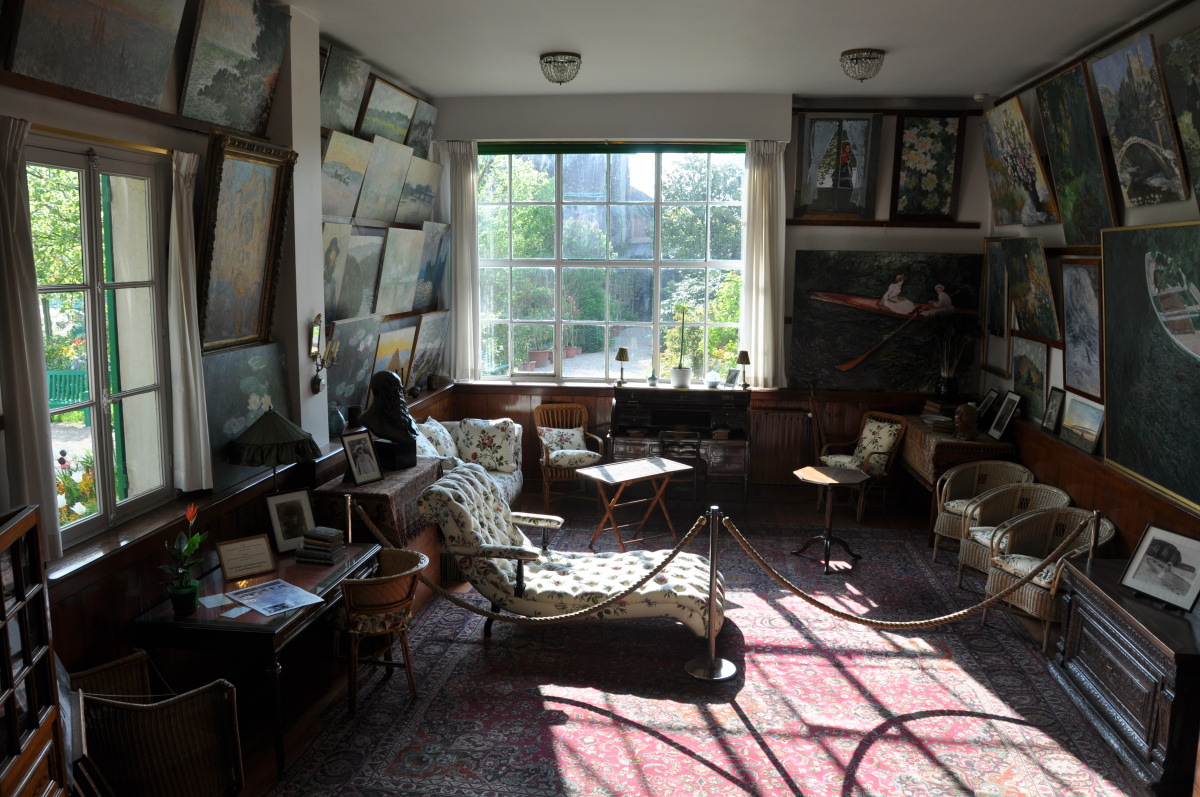Look up Giverny in France, and the first thing you will see is Claude Monet, the incredible impressionist painter most well known for the art of his water lily garden. The garden, Monet's house, and the land surrounding it, are a painting come to life. It is a town of great hills that rise up into the mountains, and while it is only a short train ride from Paris, one can easily forget that the city is so close to the French Capital.
After the crowded streets of Paris, the rugged landscapes of Normandy, and the hectic life of driving from place to place, we were finally at the end of our journey.
 |
| Giverny Streets |
 |
| Le Reserve |
Our first stop was the muse Impressionists which had a
lovely outside garden. There were groups
of schoolchildren, maybe first to third grade who were taking in the
plants. What a wonderful place to
educate a child on the importance of art education, by taking them to see the
masters. The paintings here spanned
many artists from more realistic, to softer, to blotch paintings that all make
that unique impressionist look.
Thankfully, there were no cameras and for once, the guards here seemed
vigilant to catch anyone so much as looking at a painting funny.
The paintings here were awe inspiring to me. I am no artist, but I am a fond lover of
impressionists, specifically Renoir and Monet.
Some of the paintings were profound, others simple and every single one
was lovely. We spent a good amount of
time taking it all in.
 |
| Musee Garden |
Claude Monet's house and his gardens sit almost in the center of this still eclectic artist community. Most everything is in five minutes of each other from his house to the local museum to the cemetery where he and his family are buried. It certainly is a tiny place, and quite removed from any sense of hustle and bustle the day we visited. I apologize for a lack of pictures, but photographs inside the house are not allowed, so I have to use stock ones found on the net.
 |
| Outside Monet's House |
From the outside it’s
a walled compound of pink stucco with green shutters just like I’d read about
as a kid. Walking through the main hall,
you step into a souvenir shop that once served as Monet’s studio for painting
his water lily paintings. The room is
huge, with great glass ceiling that provides a tremendous amount of light. As a
man who loved light, Monet prized such a space.
Beyond were the gardens, but before I get to that I should
touch on the house. There is, once
again, no photography inside. However,
the walls everywhere are covered almost entirely with Japanese woodblock prints
– mostly bought by Monet from traders who had just gained access to Meiji era
Japan. I found this profound,
considering Monet gained such an influence studying Japanese masters like
Hiroshige and Hokusai. I recognized some
of their most famous works.
 |
| Monet's Dining Room, notice the Ukioe prints on the walls |
 |
| Monet's Kitchen |
Monet’s private space and studio was covered in paintings
and very small by comparison to the bigger space back in the shop but it was
still a nice area. The house itself is
two stories, large and long for his rather large family but it is not
grandiose. The true star of the show,
however are the two gardens.
 |
| Garden, looking back at the house. |



